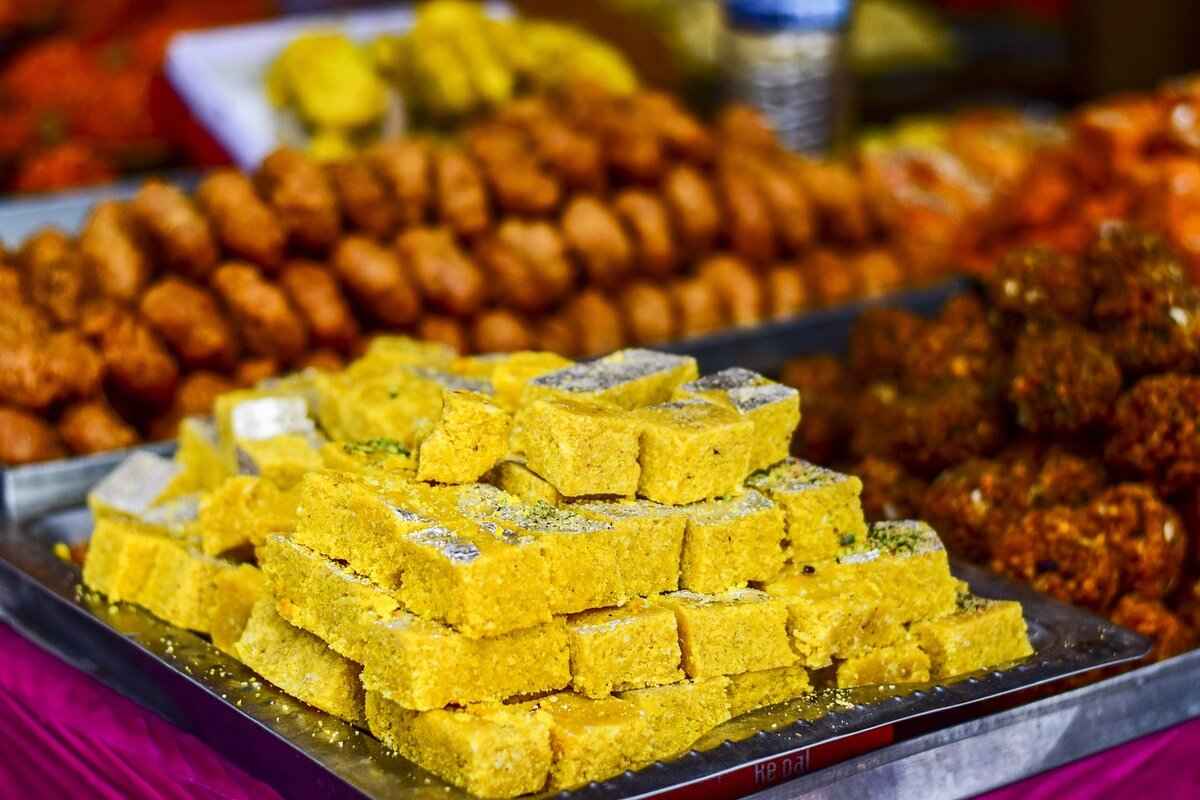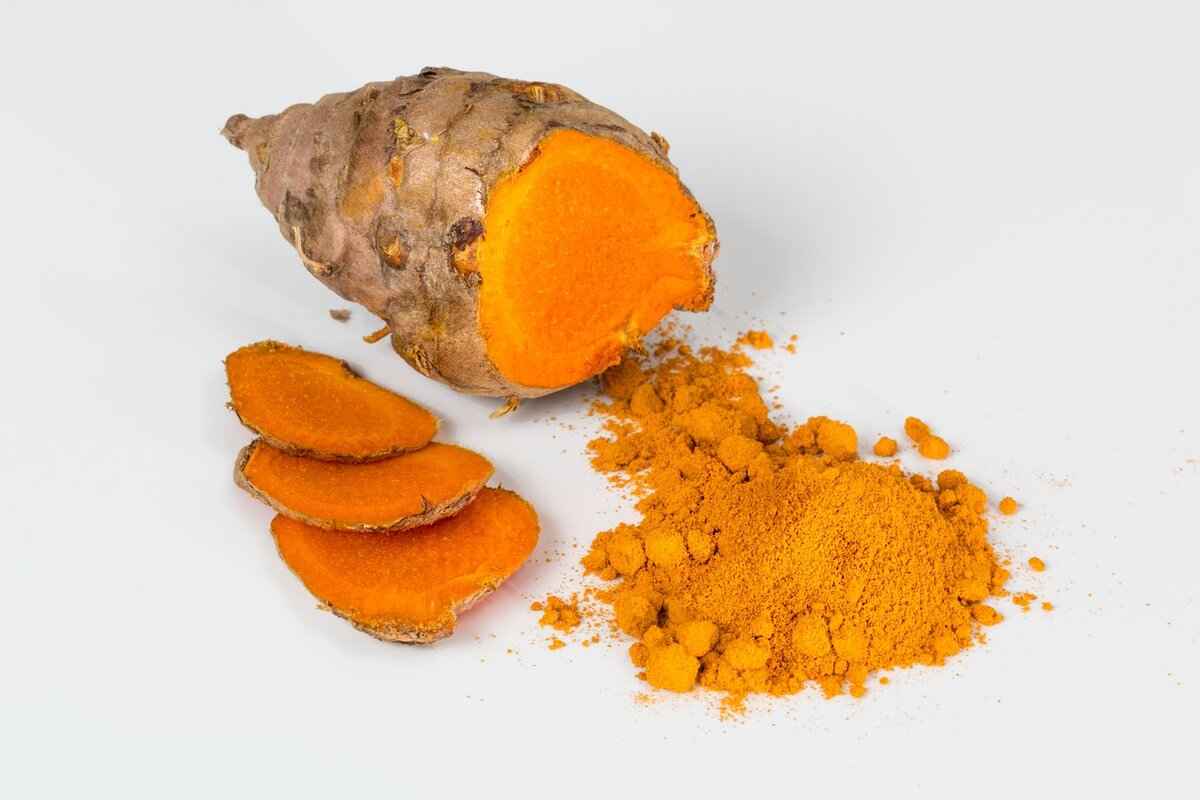Indian cuisine is a vibrant and diverse culinary tradition that reflects the country’s rich cultural heritage. This guide delves into the essential spices, flavorful curries, and the unique tandoori cooking method that make Indian food truly exceptional.
Indian cuisine is renowned for its vibrant spices that not only enhance flavor but also contribute to the health benefits of the dishes. Some of the most essential spices include:
- Cumin: Adds a warm, earthy flavor.
- Coriander: Provides a citrusy note that brightens dishes.
- Turmeric: Known for its anti-inflammatory properties and golden color.
- Cardamom: Offers a sweet and aromatic flavor, often used in desserts.
- Mustard seeds: Contribute a pungent taste, commonly used in pickles and curries.
Spices are the backbone of Indian cuisine, creating complex flavor profiles that tantalize the taste buds. Each spice brings its unique character to the dish, and when combined, they create a symphony of flavors. For instance, the combination of cumin and coriander is a classic pairing that enhances the depth of many curries.
Indian curries are incredibly diverse, ranging from rich and creamy to light and tangy. Understanding the key types can help you appreciate the culinary landscape:
North Indian curries are often characterized by their creamy textures and rich flavors. Dishes like Butter Chicken and Paneer Tikka Masala are beloved for their indulgent sauces and aromatic spices.
In contrast, South Indian curries often incorporate coconut and tamarind, contributing to a tangy and refreshing taste. Signature dishes such as Sambar and Chettinad Chicken Curry highlight these unique flavor profiles.
Tandoori cooking is a hallmark of Indian cuisine, known for its smoky flavor and unique preparation methods. The tandoor, a traditional clay oven, is key to this cooking style.
The tandoor is a cylindrical clay oven that reaches high temperatures, allowing for quick cooking and a distinct smoky flavor. Foods cooked in a tandoor, such as meats and breads, develop a unique char that enhances their taste.
Some of the most popular tandoori dishes include:
- Tandoori Chicken: Marinated in yogurt and spices, then cooked to perfection.
- Naan: Soft, fluffy bread that is perfect for scooping up curries.
- Tandoori Paneer: A vegetarian delight marinated in spices and grilled.
In conclusion, Indian cuisine is a celebration of flavors, textures, and aromas. By understanding the essential spices, diverse curries, and the unique tandoori method, you can truly appreciate the richness of this culinary tradition.

What Are the Essential Spices in Indian Cooking?
Indian cuisine is a vibrant mosaic of flavors, colors, and aromas, largely attributed to its diverse range of spices. These spices not only enhance the taste of dishes but also contribute to their nutritional value. Understanding the essential spices in Indian cooking is crucial for anyone looking to elevate their culinary skills and explore the depths of this rich cuisine.
At the heart of Indian cooking lies a unique blend of spices that define its character. Here are some of the most essential spices:
- Cumin: Known for its warm, earthy flavor, cumin is often used in both whole and ground forms. It adds depth to dishes like dal and curry.
- Coriander: With a citrusy, slightly sweet flavor, coriander seeds are commonly used in spice blends and are essential in curries.
- Turmeric: Renowned for its vibrant yellow color, turmeric is a key ingredient in many Indian dishes and is celebrated for its health benefits.
- Garam Masala: This is a blend of ground spices that varies by region, usually including cardamom, cinnamon, and cloves. It adds a warm and aromatic finish to dishes.
- Mustard Seeds: Often used for tempering, mustard seeds add a pungent flavor to pickles and curries.
- Red Chili Powder: This spice provides heat and color to dishes, with varieties ranging from mild to extremely hot.
- Fenugreek: Known for its slightly bitter taste, fenugreek leaves and seeds are commonly used in various dishes, adding complexity to flavors.
Each of these spices contributes uniquely to the overall flavor profile of Indian dishes. For example, turmeric not only provides color but also has powerful anti-inflammatory properties. Cumin and coriander work in harmony to create a balanced taste, while garam masala adds a final touch of warmth and aroma.
Understanding how to use these spices can transform your cooking. Experimenting with different combinations and proportions can lead to delightful discoveries in flavor. For instance, a simple vegetable curry can be elevated by the right blend of spices, creating a dish that is both satisfying and rich in flavor.
Moreover, the regional variations in spice usage reflect the diverse culinary traditions across India. In South India, for instance, the use of coconut and tamarind is prevalent, while North Indian cuisine often features creamier, richer dishes. This diversity is what makes Indian cuisine so fascinating and enjoyable to explore.
In conclusion, understanding the essential spices in Indian cooking is not just about enhancing flavors; it is about embracing a cultural heritage that has evolved over centuries. By incorporating these spices into your cooking, you can create authentic Indian dishes that are bursting with flavor and character.

How Do Spices Impact Flavor Profiles in Indian Dishes?
Spices are the heart and soul of Indian cuisine, contributing not only to the flavor but also to the aroma, color, and health benefits of dishes. The intricate balance of spices in Indian cooking is what makes it unique and cherished worldwide. This section explores how various spices impact the flavor profiles of Indian dishes, enhancing the overall taste experience.
In Indian cooking, spices are not merely ingredients; they are the essence of the dish. Each spice has its own distinct flavor and aroma, which can transform a simple meal into a culinary masterpiece. Here’s a look at some essential spices and their contributions:
- Turmeric: Known for its vibrant yellow color, turmeric adds an earthy bitterness and warmth to dishes. It is often used in curries and rice dishes, not just for flavor but also for its numerous health benefits.
- Cumin: This spice has a warm, nutty flavor that enhances the depth of dishes. Cumin seeds are often toasted to release their essential oils, making them a key player in many Indian recipes.
- Coriander: With a citrusy and slightly sweet flavor, coriander complements the earthiness of cumin. It is commonly used in ground form in spice blends and adds a refreshing note to curries.
- Cardamom: Often referred to as the “queen of spices,” cardamom adds a sweet and spicy flavor. It’s used in both savory and sweet dishes, enhancing the overall flavor profile.
- Cloves: These aromatic flower buds add a warm, sweet, and slightly bitter flavor. Cloves are often used in biryanis and spice blends, contributing to the rich complexity of the dish.
The combination of these spices creates a symphony of flavors that is characteristic of Indian cuisine. For instance, a typical North Indian curry might include a blend of cumin, coriander, turmeric, and garam masala, resulting in a rich and layered taste.
Moreover, spices are often used in different forms, such as whole, ground, or as pastes, which also affects the flavor. Whole spices release their flavors slowly during cooking, while ground spices offer a more immediate impact. This versatility allows chefs to manipulate the flavor profile according to the dish being prepared.
Another aspect of spices is their ability to balance flavors. For example, the heat from red chili powder can be tempered by the sweetness of coconut milk or yogurt, creating a harmonious blend that pleases the palate. This balancing act is essential in creating well-rounded dishes that are not overly spicy or bland.
Furthermore, the use of spices is often influenced by regional variations in Indian cuisine. For instance, South Indian dishes may incorporate curry leaves and mustard seeds, while Punjabi cuisine might rely more on fenugreek and asafoetida. This regional diversity not only showcases the versatility of spices but also highlights the cultural significance behind each dish.
In summary, spices are fundamental to the flavor profiles of Indian dishes, providing depth, warmth, and complexity. Understanding how to use these spices effectively can elevate your cooking and enhance your appreciation for this rich culinary tradition. Whether you are preparing a simple home-cooked meal or an elaborate feast, the right combination of spices can transform your dishes into an extraordinary experience.
Understanding the Role of Turmeric
in Indian Cuisine
Turmeric, often referred to as the “golden spice,” is an essential ingredient in Indian kitchens. Its vibrant yellow hue and distinct flavor make it a staple in a wide array of dishes. Beyond its culinary appeal, turmeric is renowned for its numerous health benefits, making it a revered spice in both cooking and traditional medicine.
What Are the Culinary Uses of Turmeric?
- Coloring Agent: Turmeric is primarily used to impart a rich golden color to dishes, making them visually appealing. It is a key ingredient in curries, rice dishes, and sauces.
- Flavor Enhancer: The earthy and slightly bitter flavor of turmeric adds depth to recipes, complementing other spices such as cumin and coriander.
- Preservative Qualities: Turmeric’s natural antimicrobial properties help in preserving food, making it a valuable addition to pickles and chutneys.
Why Is Turmeric Significant in Traditional Recipes?
In many traditional Indian recipes, turmeric is not just an ingredient; it holds cultural significance. For instance:
- Festivals and Rituals: Turmeric is often used in religious ceremonies and festivals, symbolizing purity and prosperity.
- Regional Variations: Different regions of India incorporate turmeric in unique ways, from the aromatic Dal Tadka in the north to the spicy Rasam in the south.
How Does Turmeric Contribute to Health?
Turmeric is celebrated not just for its culinary uses but also for its health benefits. The active compound, curcumin, is known for its anti-inflammatory and antioxidant properties. Regular consumption of turmeric can:
- Boost Immunity: Turmeric can enhance the body’s immune response, helping to fend off illnesses.
- Improve Digestion: It aids in digestion and can alleviate symptoms of bloating and gas.
- Support Joint Health: Turmeric is often recommended for its potential to reduce joint pain and stiffness.
Incorporating Turmeric into Your Diet
Adding turmeric to your diet is simple and versatile. Here are a few practical tips:
- Golden Milk: A popular drink made by mixing turmeric with milk, often sweetened with honey and flavored with spices.
- Curries and Stews: Use turmeric as a base spice in your favorite curry recipes for added flavor and health benefits.
- Smoothies: Add a teaspoon of turmeric powder to your morning smoothie for an extra health kick.
Conclusion
In summary, turmeric is not just a spice; it’s a vital component of Indian cuisine that enhances flavor, color, and health. Its significance in traditional recipes and its numerous health benefits make it a must-have in every kitchen. Whether you’re a seasoned cook or a novice, embracing turmeric can elevate your culinary creations while also promoting well-being.
Health Benefits of Turmeric
Turmeric is a vibrant yellow spice that has long been a staple in Indian cooking. Beyond its culinary appeal, it is also revered for its numerous health benefits, particularly its anti-inflammatory properties. In this section, we delve deeper into the various health advantages of turmeric and explore practical ways to incorporate this powerful spice into your daily diet.
- Anti-Inflammatory Effects: Turmeric contains curcumin, a compound known for its potent anti-inflammatory properties. Regular consumption may help reduce inflammation in the body, which is linked to various chronic diseases.
- Antioxidant Properties: Turmeric is rich in antioxidants, which help combat oxidative stress and protect cells from damage caused by free radicals.
- Improved Brain Function: Studies suggest that curcumin may increase levels of brain-derived neurotrophic factor (BDNF), a protein associated with improved brain function and a lower risk of brain diseases.
- Heart Health: Turmeric may enhance heart health by improving the function of the endothelium, the lining of blood vessels, and reducing the risk of heart disease.
- Digestive Aid: Turmeric can stimulate bile production, which aids in digestion and may help alleviate symptoms of bloating and gas.
Incorporating turmeric into your meals can be both simple and delicious. Here are some practical tips:
- Add to Curries: Use turmeric as a base spice in your curries to enhance flavor and color.
- Spice Up Smoothies: A teaspoon of turmeric can add a warm flavor to your morning smoothie, paired with fruits like banana and mango.
- Golden Milk: Prepare a soothing drink known as golden milk by mixing turmeric with warm milk (or a milk alternative), honey, and a pinch of black pepper to enhance absorption.
- Season Vegetables: Sprinkle turmeric on roasted or sautéed vegetables for an added health boost.
- Turmeric Tea: Brew turmeric tea by simmering fresh or powdered turmeric in water, adding lemon and honey for flavor.
While turmeric is generally safe for most people, it’s essential to consider a few factors:
- Dosage: Consuming turmeric in moderation is key. High doses may cause digestive issues for some individuals.
- Absorption: To maximize the benefits of curcumin, combine turmeric with black pepper, which contains piperine, enhancing absorption by up to 2000%.
- Consultation: If you are pregnant, nursing, or taking medications, consult with a healthcare professional before adding significant amounts of turmeric to your diet.
In conclusion, turmeric is not only a flavorful addition to your meals but also a powerhouse of health benefits. By understanding its properties and incorporating it into your diet, you can enjoy both its culinary and medicinal advantages.
Turmeric in Traditional Indian Dishes
Turmeric holds a special place in the heart of Indian cuisine, not only for its vibrant yellow color but also for its myriad health benefits and culinary versatility. This spice has been a staple in Indian kitchens for centuries, enhancing the flavor and visual appeal of numerous traditional dishes.
In many Indian households, turmeric is often referred to as “haldi,” and it is an essential ingredient in various curries and rice preparations. Its earthy flavor profile complements a wide range of ingredients, making it a favorite among cooks. When added to curries, turmeric imparts a warm, golden hue, signaling the dish’s richness and depth. This is particularly evident in popular dishes such as Dal Tadka and Chicken Curry, where a pinch of turmeric transforms the overall appearance and taste.
- Enhancing Flavor: Turmeric has a mild, slightly bitter taste that enhances the overall flavor of dishes. It works harmoniously with other spices like cumin and coriander, creating a balanced flavor profile.
- Coloring Agent: The vibrant color of turmeric not only makes dishes visually appealing but also signifies the presence of other spices, making it an important visual cue in Indian cooking.
- Health Benefits: Beyond its culinary uses, turmeric is celebrated for its anti-inflammatory and antioxidant properties. Many traditional recipes leverage these health benefits, making turmeric an integral part of healing foods.
In rice dishes, turmeric is commonly used to prepare Turmeric Rice or Pulav. The addition of turmeric not only gives the rice a beautiful golden color but also enhances its flavor, making it a delightful accompaniment to various curries. The use of turmeric in Biryani is also noteworthy, where it is layered with marinated meat and fragrant spices, creating a dish that is both aromatic and visually stunning.
Furthermore, turmeric is often included in spice blends, such as Garam Masala, which are essential for creating authentic Indian flavors. These blends are used in a variety of dishes, from vegetable curries to meat preparations, showcasing turmeric’s versatility.
In addition to its culinary applications, turmeric is deeply rooted in Indian culture and traditions. It is often used in religious ceremonies and celebrations, symbolizing purity and prosperity. This cultural significance adds another layer to its importance in Indian cooking.
In conclusion, turmeric is much more than just a spice; it is a fundamental component of Indian cuisine that enhances both flavor and color. Its integration into traditional dishes not only elevates the culinary experience but also connects with the rich cultural heritage of India. Whether in curries, rice dishes, or as part of spice blends, turmeric remains an indispensable ingredient that continues to delight palates around the world.
The Importance of Cumin and Coriander
When exploring the world of Indian cuisine, cumin and coriander emerge as two of the most essential spices that form the backbone of countless dishes. Their unique flavors not only enhance the taste of food but also contribute to the aromatic profile that Indian cooking is famous for. This section delves into the significance of these spices, their individual characteristics, and how they harmoniously complement each other in various recipes.
Cumin has a warm, earthy flavor with a hint of citrus, making it a versatile spice that can be used in both savory and sweet dishes. It is often toasted to release its essential oils, enhancing its flavor and aroma. On the other hand, coriander, derived from the seeds of the cilantro plant, offers a slightly sweet, nutty flavor with citrus undertones. Together, these spices create a balanced flavor profile that is both complex and inviting.
The pairing of cumin and coriander is a classic combination in Indian cooking, often referred to as the “cumin-coriander blend.” This blend is foundational in many spice mixes, including garam masala and chaat masala. The earthy notes of cumin beautifully balance the bright, fresh flavors of coriander, making them perfect partners in a variety of dishes.
- Curries: Many Indian curries, such as Chana Masala and Butter Chicken, utilize both cumin and coriander to build depth of flavor.
- Rice Dishes: In biryanis and pulaos, these spices are often added to enhance the overall taste and aroma.
- Soups and Stews: Cumin and coriander are frequently used in lentil soups, providing a hearty and comforting flavor.
Incorporating cumin and coriander into your cooking is simple and rewarding. Here are a few practical tips:
- Toasting: Toast whole cumin and coriander seeds in a dry pan for a few minutes before grinding them to release their full flavor.
- Cooking: Add ground cumin and coriander early in the cooking process to allow their flavors to meld with other ingredients.
- Garnishing: Use fresh coriander leaves as a garnish to add a burst of freshness to your dishes.
Both cumin and coriander are not only flavorful but also offer various health benefits. Cumin is known for its digestive properties, helping to alleviate bloating and improve overall gut health. Coriander, rich in antioxidants, may help in reducing inflammation and promoting heart health. Including these spices in your diet can contribute to a balanced and nutritious meal plan.
In summary, the importance of cumin and coriander in Indian cooking cannot be overstated. Their unique flavors and health benefits make them indispensable in the culinary world. By understanding how to effectively use these spices, you can elevate your cooking and enjoy the rich flavors that Indian cuisine has to offer.

What Are the Key Types of Indian Curries?
Indian cuisine is a vibrant tapestry of flavors, aromas, and textures, with curries playing a pivotal role in this culinary landscape. The diversity of Indian curries is a reflection of the country’s rich cultural heritage and regional variations. Each type of curry brings its own unique blend of spices and ingredients, contributing to the overall complexity and depth of Indian cooking. Understanding the different types of curries can greatly enhance your appreciation for this remarkable cuisine.
- North Indian Curries: These curries are often characterized by their creamy textures and rich flavors. Popular dishes include:
- Butter Chicken: A beloved dish made with marinated chicken cooked in a buttery tomato sauce.
- Paneer Tikka Masala: Cubes of paneer (Indian cottage cheese) cooked in a spiced gravy.
- South Indian Curries: Known for their use of coconut and tamarind, these curries often have a tangy flavor. Iconic dishes include:
- Sambar: A lentil-based vegetable stew flavored with tamarind and spices.
- Chettinad Chicken Curry: A spicy chicken curry from the Chettinad region, renowned for its use of freshly ground spices.
- East Indian Curries: These curries often incorporate mustard oil and have a distinct flavor profile. Notable dishes include:
- Bengali Fish Curry: Fish cooked in a mustard sauce with spices.
- Dhoka Curry: A vegetarian curry made with gram flour and spices, often enjoyed with rice.
- West Indian Curries: These curries vary greatly, with influences from both coastal and desert regions. Examples include:
- Goan Fish Curry: A coconut milk-based curry with a perfect balance of spices.
- Rajasthani Laal Maas: A fiery lamb curry made with red chilies and yogurt.
Each region’s curry reflects its local ingredients, climate, and cultural influences, making Indian curries incredibly diverse. The use of spices such as cumin, coriander, and turmeric not only enhances the flavor but also contributes to the health benefits associated with these dishes.
Moreover, the cooking methods vary significantly, from slow-cooked stews to quick stir-fries, each method imparting a unique flavor and texture to the dish. Understanding these differences can elevate your culinary skills and allow you to recreate authentic Indian flavors in your own kitchen.
In conclusion, the world of Indian curries is vast and varied, each type offering a unique taste experience. By exploring these different curries, you can gain a deeper appreciation for the complexity of Indian cuisine and its rich cultural heritage.
Exploring North Indian Curries
North Indian curries are a feast for the senses, known for their richness and creamy textures. These dishes often feature a blend of spices that create a symphony of flavors, making them a favorite among food enthusiasts worldwide. In this section, we will explore some of the most popular North Indian curries, including the iconic Butter Chicken and Paneer Tikka Masala, while also delving into their unique characteristics and cultural significance.
Butter Chicken, also known as Murgh Makhani, is a dish that originated in Delhi. This exquisite curry is made from marinated chicken that is cooked in a creamy tomato sauce, enriched with butter and a mix of aromatic spices. The secret to its unforgettable flavor lies in the marination process, where the chicken is typically soaked in yogurt and a blend of spices like garam masala, cumin, and coriander. This not only tenderizes the meat but also infuses it with a depth of flavor that is simply irresistible.
Paneer Tikka Masala is a beloved vegetarian counterpart to Butter Chicken. It features grilled cubes of paneer (Indian cottage cheese) that are marinated in spices and yogurt, then cooked in a rich, creamy tomato gravy. The combination of smoky grilled paneer and the luscious sauce makes it a favorite among vegetarians and meat-lovers alike. This dish is often served with naan or rice, making it a complete meal that is both satisfying and delicious.
- Dal Makhani: A hearty lentil dish cooked with butter and cream, offering a comforting taste.
- Rogan Josh: A fragrant lamb curry from Kashmir, known for its vibrant red color and aromatic spices.
- Chole Bhature: A spicy chickpea curry served with deep-fried bread, popular in Punjab.
Each of these dishes showcases the diversity and richness of North Indian cuisine. The use of cream, butter, and yogurt in many curries not only enhances their flavor but also adds to their luxurious texture. Furthermore, the careful balance of spices ensures that each dish is packed with flavor, making them a staple in Indian households and restaurants alike.
North Indian curries are often served with naan, roti, or rice, allowing diners to enjoy the rich sauces. Accompaniments such as raita (a yogurt-based side dish) and pickles add an extra layer of flavor and contrast to the meal. The combination of these elements creates a well-rounded dining experience that is both satisfying and memorable.
In summary, North Indian curries like Butter Chicken and Paneer Tikka Masala are not just meals; they are a celebration of flavors, textures, and cultural heritage. Their popularity continues to grow, captivating the hearts of food lovers around the globe. Whether you are a seasoned chef or a home cook, exploring these dishes can enhance your culinary repertoire and bring a taste of India to your table.
Understanding South Indian Curries
South Indian cuisine is a vibrant and essential part of India’s culinary landscape, known for its unique flavors and ingredients. Among the most defining features of South Indian curries are the use of coconut and tamarind, which add a distinct taste and texture to various dishes. Let’s delve into two of the most iconic South Indian curries: Sambar and Chettinad Chicken Curry.
Sambar is a lentil-based vegetable stew that is a staple in South Indian households. Made with a variety of vegetables such as carrots, potatoes, and drumsticks, it is flavored with a unique blend of spices and tamarind, giving it a tangy taste. The addition of coconut enhances its richness and creates a delightful contrast with the spices.
- Key Ingredients: To prepare Sambar, you will need:
- Lentils (Toor dal or split pigeon peas)
- Vegetables (like pumpkin, radish, and eggplant)
- Tamarind pulp
- Mustard seeds and curry leaves for tempering
- Serving Suggestions: Sambar is typically served with rice, idli, or dosa, making it a versatile dish that can be enjoyed at any meal.
Chettinad Chicken Curry hails from the Chettinad region of Tamil Nadu and is renowned for its bold flavors and aromatic spices. This curry is characterized by its use of a variety of spices, including cinnamon, cloves, and star anise, which contribute to its rich flavor profile.
- Spice Blend: The unique spice blend used in Chettinad Chicken includes:
- Black pepper
- Red chilies
- Fennel seeds
- Fresh coconut
- Cooking Method: The chicken is marinated in yogurt and spices, then cooked slowly to allow the flavors to meld, resulting in a deeply satisfying dish.
The use of coconut in South Indian curries adds a creamy texture and a subtle sweetness that balances the heat of the spices. Coconut can be used in various forms, such as grated, milk, or oil, depending on the dish. On the other hand, tamarind provides a tangy flavor that brightens the overall taste, making it an essential ingredient in many curries.
South Indian curries are not only delicious but also showcase the region’s rich culinary heritage. They offer a unique blend of flavors and textures that cater to diverse palates. Whether you are a fan of vegetarian dishes like Sambar or prefer the robust flavors of Chettinad Chicken Curry, there is something for everyone to enjoy.
In conclusion, exploring South Indian curries opens up a world of flavors that are both comforting and exhilarating. With ingredients like coconut and tamarind at the forefront, these dishes exemplify the essence of South Indian cuisine.

What Makes Tandoori Cooking Unique?
Tandoori cooking is a celebrated aspect of Indian cuisine, renowned for its ability to infuse dishes with a distinctive smoky flavor and a unique cooking technique. This culinary method revolves around the use of a tandoor, a traditional clay oven that has been a staple in Indian kitchens for centuries. The tandoor not only provides a unique cooking environment but also enhances the flavor profile of various dishes.
The tandoor is a cylindrical oven made from clay, designed to retain heat effectively. It is typically heated with charcoal or wood, reaching temperatures of up to 900°F (480°C). This high heat allows for quick cooking, which is essential for achieving the characteristic char and smokiness associated with tandoori dishes. The design of the tandoor allows for a variety of cooking methods, including baking, roasting, and grilling.
Tandoori cooking holds a significant place in Indian cuisine due to its ability to create flavorful and aromatic dishes. The intense heat of the tandoor seals in moisture, resulting in tender meats and perfectly baked breads. Additionally, the unique cooking method enhances the natural flavors of the ingredients, allowing for a rich culinary experience. This technique is not just about cooking; it is a cultural practice that has been passed down through generations.
One of the advantages of tandoori cooking is its health benefits. Because the cooking process involves minimal oil, tandoori dishes are generally lower in fat compared to other cooking methods. The high temperatures also help in reducing harmful bacteria, making the food safer to consume. Furthermore, the use of spices like turmeric, cumin, and ginger in marinating tandoori dishes adds additional health benefits, including anti-inflammatory properties and improved digestion.
- Tandoori Chicken: Marinated in yogurt and spices, this dish is a classic example of tandoori cooking, known for its vibrant color and flavor.
- Tandoori Naan: A beloved Indian bread, naan is baked in the tandoor, resulting in a fluffy texture with a slight char.
- Paneer Tikka: This vegetarian option features marinated paneer cubes grilled to perfection, making it a favorite among non-meat eaters.
- Tandoori Fish: Fish marinated in spices and grilled in the tandoor offers a healthy and flavorful alternative to meat dishes.
For those who wish to experience tandoori flavors at home, a regular oven can be used with some adjustments. Preheat your oven to its highest setting and use a baking stone or a cast-iron skillet to mimic the intense heat of a tandoor. Marinate your meats or vegetables in yogurt and spices for several hours to allow the flavors to penetrate deeply. Cooking on high heat will help achieve that signature charred exterior while keeping the inside moist and tender.
In conclusion, tandoori cooking is not just a method; it is an integral part of Indian culinary heritage that combines tradition, flavor, and health. By understanding its significance and experimenting with recipes, anyone can appreciate the unique qualities that tandoori cooking brings to the table.
The Tandoor: A Traditional Clay Oven
The tandoor is more than just a cooking appliance; it is a cultural icon that has been an integral part of Indian cuisine for centuries. This traditional clay oven, typically cylindrical in shape, uses charcoal or wood as fuel, which imparts a unique smoky flavor to the dishes cooked within. The tandoor is renowned for its ability to reach high temperatures, often exceeding 900°F (480°C), which is essential for achieving the perfect texture and taste in various foods.
Constructed from clay, the tandoor is designed to retain heat efficiently, allowing for even cooking. The outer surface is often coated with a layer of mud or ash, which helps in insulation and enhances the flavor of the food. The interior is typically shaped to facilitate the cooking of multiple items simultaneously, making it ideal for large gatherings or family meals.
The tandoor is incredibly versatile and can be used for a variety of cooking methods, including baking, roasting, and grilling. One of the most popular uses is for cooking naan, a type of flatbread that puffs up beautifully when placed against the hot walls of the oven. The high heat also makes it perfect for marinating meats, which can be cooked on skewers or directly on the oven’s walls.
- Marination: Meats are often marinated in a mixture of yogurt and spices, which tenderizes the meat and infuses it with flavor.
- Cooking Techniques: Food can be cooked on skewers (known as kebabs) or placed directly on the oven’s sides, allowing for different textures and tastes.
- Temperature Control: The tandoor’s ability to reach high temperatures ensures that food cooks quickly, sealing in moisture and flavor.
The tandoor is famous for a variety of dishes that showcase its unique cooking capabilities. Some of the most popular items include:
- Tandoori Chicken: This iconic dish features chicken marinated in a blend of spices and yogurt, then cooked to perfection in the tandoor.
- Paneer Tikka: Cubes of paneer (Indian cottage cheese) marinated in spices and grilled, making for a delicious vegetarian option.
- Seekh Kebabs: Minced meat mixed with spices and herbs, shaped onto skewers, and cooked in the tandoor.
- Naan and Roti: Various types of flatbreads that are baked in the tandoor, gaining a distinctive charred flavor.
In addition to these, the tandoor can also be used to cook vegetables, fish, and even desserts, showcasing its versatility. The unique cooking method not only enhances the flavors but also provides a healthier alternative, as it requires less oil compared to traditional frying methods.
The tandoor holds a special place in Indian culture, symbolizing communal cooking and sharing. It is often the centerpiece of social gatherings, where families and friends come together to enjoy meals prepared in this traditional oven. The act of cooking in a tandoor is not just about the food; it is about the experience of togetherness and the joy of sharing delicious meals.
In conclusion, the tandoor is a remarkable culinary tool that brings a distinct flavor to Indian cuisine. Its construction, usage, and the variety of foods it can prepare make it an essential part of the cooking tradition. Whether you are enjoying a smoky piece of tandoori chicken or a freshly baked naan, the tandoor offers an experience that is both flavorful and culturally significant.
Popular Tandoori Dishes to Try
When it comes to Indian cuisine, tandoori dishes are among the most celebrated and loved. The unique cooking method, which involves a traditional clay oven known as a tandoor, imparts a distinct smoky flavor to various dishes. Here, we will delve into some of the most popular tandoori dishes, highlighting their preparation methods and unique flavors.
Tandoori Chicken is perhaps the most iconic dish cooked in a tandoor. Marinated in a mixture of yogurt and spices such as cumin, coriander, and garam masala, this chicken is then cooked at high temperatures, resulting in a juicy and flavorful dish. The vibrant red color often seen in tandoori chicken comes from the addition of red chili powder and sometimes food coloring.
Naan bread is a staple accompaniment to many Indian meals, and its preparation in the tandoor gives it a unique texture and flavor. Made from a simple dough of flour, water, and yeast, naan is traditionally cooked by slapping it onto the hot walls of the tandoor. This method creates a delightful charred exterior while keeping the inside soft and fluffy.
Tandoori Paneer is a popular vegetarian alternative that showcases the versatility of the tandoor. Cubes of paneer (Indian cottage cheese) are marinated in a spiced yogurt mixture and then grilled in the tandoor. The result is a smoky, flavorful dish that is often served with mint chutney and onion rings.
Tandoori Fish is another delightful option that highlights the diversity of tandoori cooking. Fish fillets are marinated in a blend of spices and yogurt before being cooked in the tandoor. This method not only enhances the flavor but also helps retain the moisture of the fish, making it tender and succulent.
Tandoori Lamb dishes, such as lamb chops or kebabs, are a favorite among meat lovers. The marination process, similar to that of tandoori chicken, allows the meat to absorb the rich flavors of spices. When cooked in the tandoor, the lamb develops a beautiful char and a depth of flavor that is hard to resist.
- Tandoori Broccoli: A healthy vegetarian option that is marinated and grilled to perfection.
- Tandoori Shrimp: Marinated shrimp cooked in the tandoor for a spicy and flavorful seafood dish.
- Seekh Kebabs: Minced meat skewers spiced and grilled in the tandoor, perfect as appetizers.
In conclusion, tandoori cooking not only enhances the flavor of various dishes but also offers a unique culinary experience. From the smoky flavor of tandoori chicken to the soft and fluffy naan, these dishes are a testament to the rich heritage of Indian cuisine. Exploring these popular tandoori dishes is sure to delight your taste buds and introduce you to the vibrant world of Indian flavors.
Frequently Asked Questions
- What are the essential spices in Indian cooking?
Indian cooking is a vibrant dance of flavors, and spices are its stars! Essential spices include cumin, coriander, turmeric, and cardamom. Each spice brings its own unique flair, transforming ordinary dishes into extraordinary culinary experiences.
- How do spices impact flavor profiles in Indian dishes?
Spices are like the artists of Indian cuisine, painting a rich tapestry of flavors. They work together to create complex flavor profiles that can be spicy, sweet, or even tangy. For instance, a pinch of cinnamon can add warmth, while chili powder brings the heat!
- What are some key types of Indian curries?
When it comes to curries, India has a smorgasbord of options! You can explore North Indian curries like Butter Chicken or Paneer Tikka Masala, known for their creamy textures. On the flip side, South Indian curries such as Sambar and Chettinad Chicken Curry often feature coconut and tamarind, offering a delightful tang!
- What makes tandoori cooking unique?
Tandoori cooking is truly a culinary marvel! The tandoor, a traditional clay oven, infuses dishes with a smoky flavor that’s hard to replicate. Whether it’s Tandoori Chicken or Naan, the high heat and unique cooking method create a delicious char and depth of flavor.














